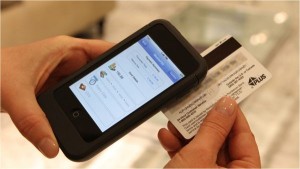Today’s consumers are now empowered with an ever increasing range of channels and devices creating a dynamic path to purchase which has created a shift in the consumer markets industry. The digital, social and mobile evolutions are shape-shifting almost every aspect of the customer experience and, in the process, creating new opportunities and challenges for retailers and consumer product companies seeking to engage those consumers. What do we know about customers today? They are now omni-channel customers, connected to and utilizing all channels (brick and mortar stores, computers, mobile devices, tv, print) to search for products, compare prices and make purchases. They want a seamless, unique experience tailored to their personal tastes and needs.
It will be imperative and crucial for retailers to invest in innovative technologies both in-store and online. Retailers will want to invest in technology that enables more granular control over how, when and why they engage their customers. Mobile POS systems, information kiosks, tablets, beacons, augmented reality/virtual fitting rooms, in-store notifications, digital displays, etc., are all going to be a big part of retail strategies in 2015. Retailers are and will continue to invest in innovations that will redefine how we as consumers experience the shopper’s journey.
Mobile & mPOS
Retailers are testing mobile payment options and integrating them with loyalty programs to expand mobile capabilities. It will be very important for retailers (especially those who have not) to adopt mobile payments. This not only provides convenience for the customer but gives the sales associate the ability to provide constant and continuous customer engagement.
Both customers and sales associates can use mobile solutions as they go through the store together. In-store mobile has to break down the barrier between the brick-and-mortar store and the digital world. Utilizing a mobile devices, associates can sell the customer product that is in the store along with the product that is online – all in one transaction.
Virtual & Augmented Reality
Many stores are using digital channels to help drive their in-store traffic, especially in the terms of augmented reality and virtual fitting rooms. Retailers like Nordstroms are experimenting with technology that turns the mirrors in fitting rooms into interactive deplays such as if one was browsing the web. A consumer can see if the store has a different size or style and connects with the associate to bring you another option.
Imagine putting on a headset that sends you to a front seat at the fashion week’s cat walk. Although originally designed for gaming, retailers such as TopShop saw an opportunity combining live footage, 360 degree photography, animation, etc. to show consumers the experience of being able to sit at top designer’s front row action at fashion week. They are using this to show how their apparel can be worn with clips from cat walks.
American Apparel is now using a system to mimic the experience of online shopping while in the store. Shoppers are able to scan signage, bringing up various options that the retailer might want to point out for how that product might be used.
Interactive Displays
Window displays are becoming more interactive and engaging to help increase and drive store traffic. Ralph Lauren has 15 window displays at Harrods in London that displays items allowing consumers to scan or tap the display to initiate a landing page on their mobile phone. By integrating beacon tech into a window display retailers can engage with not only customers in-store but people that are just passing by. Harrods sales director said “It’s great to be able to reach out to the passerby, even when the store is closed and build brand loyalty and excite customers into the store, or for a return visit. These technology advancements are relevant and help connect with today’s connected shopper.
Customization & Personalization
Technologies, analytics, new data type and tools are enabling retailers to expand the use of big data and analytics across their organizations and find new ways to apply these analytics. Big data enables marketing and promotions to move to one segment and deliver highly targeted, personalized, and relevant content.
Enabling retailers with customer profile information to customize promotions and offers, understand consumer behaviors and purchases allow a more much fulfilling experience for the consumer. Big data enables marketing and promotions to move to one segment and deliver highly targeted, personalized, and relevant content.
Neiman Marcus started customizing messages to their customers in 2012 through an app they developed. The app allowed customers to communication with sales associates, arrange items to be placed in fitting rooms prior to arrivals and actually view what was on the store floor. It also provided a means for the associates to look up profile information that included purchase history and could be notified when the customer arrived at the store.
Technology – Enabling Sales Associates
With smartphone and table devices, retailers are able to provide associates with selling tools, not only giving them the ability to check out a customer and engage with them directly, but to understand other things such as store or nearby inventory. Store associates are now given a 360 degree view of the customer across the board. Access to online resources, like product and item information, notifications and updates from the merchandisers or category owners, the ability to provide more detail, will provide a connection to the consumers. The store associate ultimately can engage with that consumer in a faster and more in depth, personalized manner.
